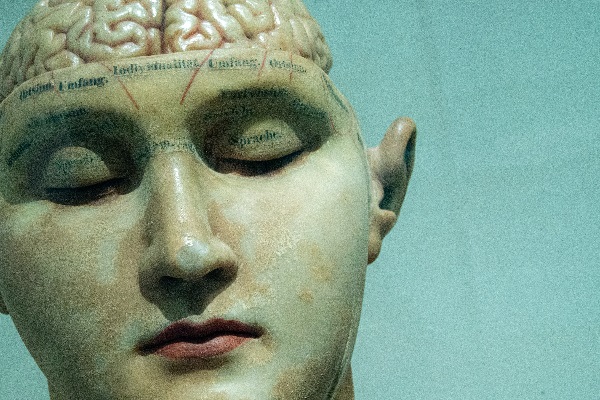
Wellness
Understanding and Finding the Right Therapy for You
CJ Liu talks to Richard D. Lane, MD about his book “Neuroscience of Enduring Change: Implications for Psychotherapy.”
What Kind of Therapy is Best For Me? // Part 1 of 5
Dr. Lane shares the most popular types of therapies available today. Amongst the 500 modes of therapy, he boils them down to three major categories.
1. Cognitive Behavioral Therapy offers skills to address behaviors and thoughts you’d like to change.
2. Emotion-focused (Gestalt) which exposes clients to repressed emotions.
3. Insight therapy (Freudian/Jungian) which looks at understanding your past and how that may influence your future behavior.
While most clients get referrals from friends and family, it’s best to think about the type of problem you have and match them to the appropriate therapy. However, the most important thing to consider is if you have a strong alliance, that your counselor is empathetic. You also want to consider whether you have a problem that is limited in focus (e.g.- fear of snakes) or something more generalized (e.g.- can’t seem to hold onto a relationship).
Rewire Your Brain Through Memory Reconsolidation // Part 2 of 5
Dr. Lane shares Lynn Nadel’s research on memory which categorizes memories into:
1) Episodic (a specific event- i.e. a radio interview)
2) Semantic (generalized knowledge- i.e. what it the capital of CA?)
3) Schematic (sequence of events that give you an expectation of what will happen- i.e. I did 5 radio interview and now I expect xyz)
4) Procedural (Behaviors based on muscle memory- i.e. how to ride a bike).
Dr. Lane explains that we operate through autopilot. This means we work on procedural memory based on a situation. If we want to change our behavior, then we must change our memory. In the video, Dr. Lane uses the hypothetical example of fear of doing public speaking in a radio interview. If Dr. Lane has 5 neutral experiences, and 1 positive, it will then update his schematic and his expectations. More positive experiences would result in him willing to take a chance versus avoid radio interviews more often. This has implications for therapy, in that you want therapy to help you update your schematics by providing a re-framing of episodic events in a positive light.
Is My Therapy Working? // Part 3 of 5
As a client, it’s sometimes unclear how to judge whether the therapy is working. Dr. Lane explains that you know if positive change has occurred because there is enduring change.
1) Activating the old problematic memories and their associated emotions and seeing if your relationship to these memories no longer trigger you. A memory might be that you had an awful experience at age 10 when your teacher told you your presentation was not good. You then felt shame about doing public speaking.
2) Having corrective emotional experiences to be altered through reconsolidation. For example, an empathetic therapist helps you shift the way you feel about your 10 year old experience.
3) Converting updated episodic experiences into enduring somatic structures by practicing new ways of behaving and experiencing oneself and others in your interactions with the world. For example, you find yourself engaging in new ways to public speaking. If you shift your feelings about a challenging or traumatic event and reconsolidate these feelings and they translate into new behaviors, then you can tell that the therapy is actually working.
Uncommon Knowledge: How to Have a Good Psychotherapy Session // Part 4 of 5
Dr. Lane shares some tips from his research on how you can cement gains or insights offered that happen during a psychotherapy session. Sleep is a critical part of the healing journey. Having deep restorative sleep helps your brain incorporate these new corrective emotional experiences. As such, Dr. Lane’s research has implications not only for the frequency, duration, and medications you should take with a therapy session. For example, if you experience a shift, it may be better to stop, take a nap, and continue the next day. Medications have been found to compliment therapy, however Dr. Lane’s findings suggest that you may consider asking your doctor about your medications and their impact on you getting REM sleep.
How Do I Put My Past Bad Memories Behind Me? // Part 5 of 5
Dr. Lane shares that whenever we have memories (episodic- one event, or semantic- sequence of memories) or an emotion, that any one of these that present in our heads brings up another. For example, bringing up a memory will bring up an emotion and vice-a-versa. If we want to change our emotional response then we need to change our thoughts. Specifically, his research has found that we need to add corrective positive emotions to update the negative emotions related to a thought. This has implications for a therapy session and ensuring that in a session the therapist does not just bring back negative emotions, but offers positive corrective emotions as well.
More on Dr. Richard Lane
Dr. Richard Lane is Professor of Psychiatry, Psychology and Neuroscience at the University of Arizona. He received his BA in Psychology (magna cum laude) from Yale University, his MD from the University of Illinois in Chicago and completed his psychiatric residency and a research fellowship at the Yale University School of Medicine. Dr. Lane received a PhD in Experimental Psychology (with special emphasis in cognitive neuroscience) from the University of Arizona.
Related Articles on Understanding and Finding the Right Therapy for You






